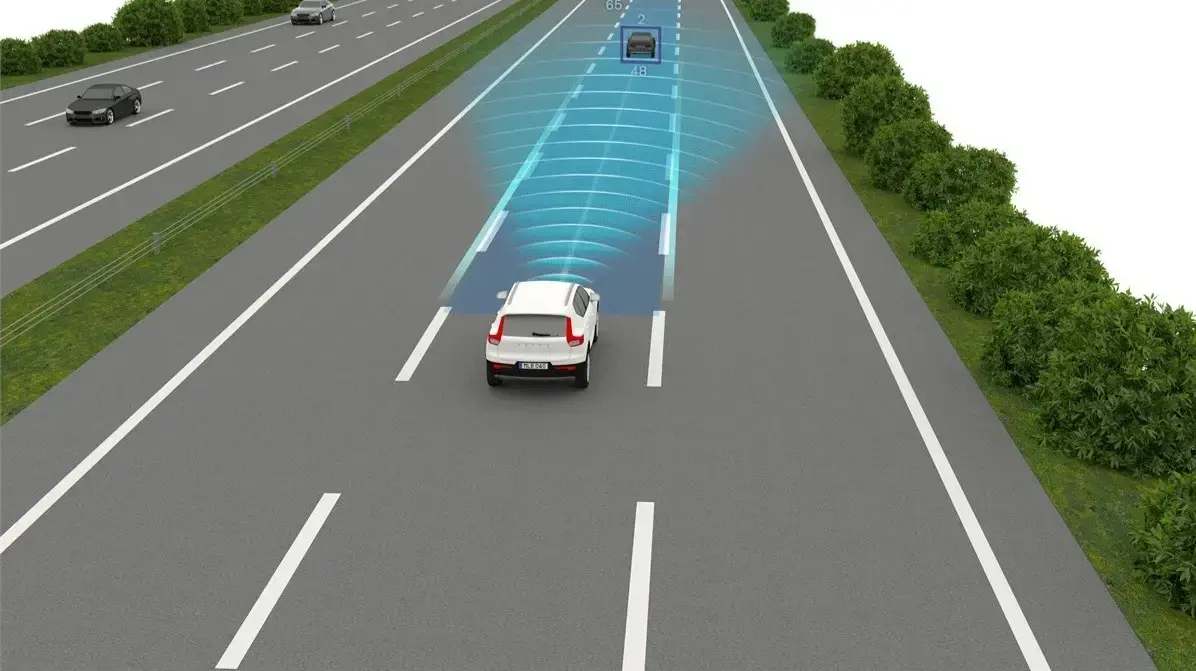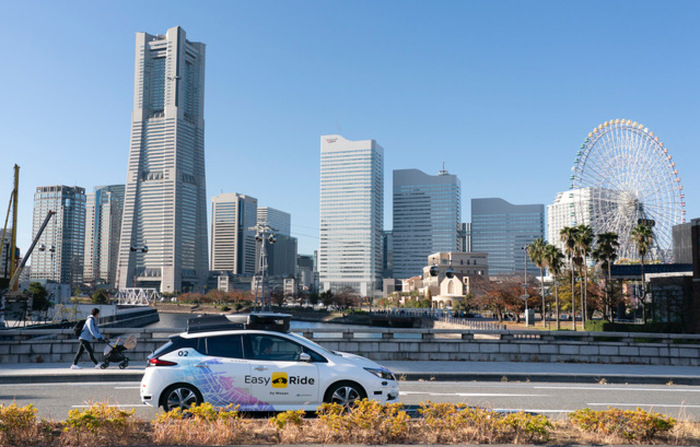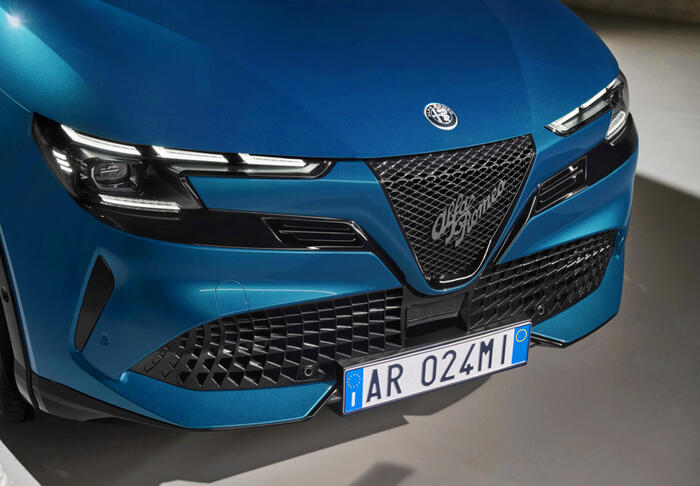0 comments
Facebook
Twitter
e-mail
Author Sebastian Oppenheimer
shut down
Report an error
shut down
Further
shut down
In the future, car manufacturers should be able to specify when automated driving functions can be activated - with the help of software from Here.
Do you need autonomous driving or not?
According to a study, Germans are relatively skeptical about the subject.
Irrespective of this, there is hardly a car manufacturer that is not researching a corresponding technology, even if the development turns out to be more difficult than originally assumed - high speeds in particular are a problem.
And certain other situations are just too complex at the moment - a YouTuber recently showed how little confidence the FSD beta of Tesla's "Autopilot" behaves on snow.
Here Technologies has now announced an innovation that could help the series introduction of autonomous driving.
Driver assistance systems: New technology only allows “autonomous driving” in special areas
In principle, software enables manufacturers to decide when and under what conditions they allow automated driving functions.
"Automated Driving Zones" is the name of the technology that works in conjunction with Here's map technology.
Each car manufacturer can specify its own parameters for the system.
The technology is already being used in development by two global automobile manufacturers.
The Here technology is particularly interesting with regard to automated functions from the so-called Level 3, as Mercedes already offers.
Because from this level of automation, the responsibility for using the technology is transferred from the driver to the manufacturer.
To be on the safe side, car manufacturers could activate their automated functions on motorways or country roads, for example – but they could block the robotic functions in front of schools or retirement homes because the risk here might be too great.
Extreme concept cars: ten spectacular studies that never went into series production
10th place - Renault Trezor Concept (2016): At the Paris Motor Show in 2016, Renault presented a real eye-catcher: the futuristic flounder Trezor Concept gave a glimpse of what a purely electric Gran Turismo from the French could look like.
The highlight of the concept vehicle were the missing doors - instead, the roof and bonnet opened to get in.
However, it was already clear when it was presented: This vehicle is simply too extraordinary to ever go into series production.
It's nice to look at nonetheless.
© CTK Photo/Imago
9th place - Peugeot e-Legend (2018): Not everything has to be new: At the Paris Motor Show 2018, Peugeot showed the retro study e-Legend.
When it came to design, the French were inspired by the 504 – a model that premiered in the late 1960s.
While the design looked to the past, a technical look was taken at the future: The vehicle was equipped with a purely electric drive and was intended to show how autonomous driving modes are imagined.
For example, the steering wheel could be lowered under the soundbar.
Nevertheless: The e-Legend did not go into series production.
© Xinhua/Imago
8th place - VW Futura (1989): When it comes to a trade fair show car, car designers like to use gullwing doors - this way even a relatively unspectacular vehicle looks at least somewhat exciting.
The VW Futura was also equipped with it in 1989 for its appearance at the IAA in Frankfurt - knowing full well that this complex technology will most likely not make it into a production model.
Both the wing doors and the glass tailgate could also be removed, making the Wolfsburg a kind of T-top convertible.
The Futura remained a one-off, but it did give a small preview of the design of the later VW Sharan.
© Volkswagen
7th place - Audi Urban Concept (2011): When it comes to show cars, each manufacturer has its own philosophy - in the case of Audi, the vehicles are usually a relatively concrete preview of a production car.
Not so with the Audi Urban Concept: At the IAA 2011 in Frankfurt, the Ingolstadt-based company showed the narrow-gauge vehicle in which two people can sit one behind the other.
The dynamic racing car look belied the modest engine: two electric motors were supposed to deliver 20 hp.
The vehicle weighed only 480 kilograms – the top speed was 100 km/h, and Audi stated the range to be around 60 kilometers.
The study, which was designed purely as a city vehicle, was later also shown as a Spyder version – neither of which went into series production.
© Audi
The BMW M1 HommagePlatz 6 – BMW M1 Hommage (2008): In autumn 1978, BMW began production of the legendary M1 super sports car – by the end of 1981 460 examples had been built.
However, the 277 hp from an in-line six-cylinder no longer sound really powerful.
All the more you remember the wedge-shaped design of the mid-engine athlete.
BMW revived the legend in 2008: at the Concorso d'Eleganza on Lake Como, the Munich company showed the BMW M1 Hommage.
The extremely designed study in orange metallic paint is a real eye-catcher.
The retro flounder did not go into series production - however, the design took something ahead of another vehicle: the BMW i8, which was built from 2013.
©BMW
The Opel Monza ConceptPlace 5 - Opel Monza Concept (2013): Gullwing doors are a real rarity in production vehicles - mostly you only see them in super sports cars, because the technology is complex and vulnerable.
But they are always an eye-catcher, which is why they are perfect for trade fair studies.
Opel also opted for this with the Monza Concept at the IAA in Frankfurt in 2013.
The series chances for a chic luxury coupé of this type from Opel were slim from the start.
It stayed with the one show car.
If you want to drive a Monza today, you have to look for an original that was built from the end of the 1970s.
© YAY Images/Imago
The Bugatti 16C Galibier ConceptPlace 4 – Bugatti 16C Galibier Concept (2009): Nowadays, the Bugatti brand is best known for two models: the Veyron and Chiron super sports cars – both equipped with a 16-cylinder engine and an output of well over 1,000 hp.
In 2009, however, with the Bugatti 16C Galibier Concept, the brand showed selected guests how one could imagine a French luxury sedan.
The public then got to see the show car at the 2010 Geneva Motor Show.
As the suffix "16C" reveals, the sporty sedan would also have been equipped with a powerful 16-cylinder engine.
The Galibier did not find his way into series production - if one can speak of it at all given the small quantities of the brand.
The special feature of the concept car remains all the more exclusive:
A Parmigiani Fleurier tourbillon watch is installed on the car's dashboard - this can be removed from the holder and worn as a wristwatch.
© Uli Deck/dpa
The Citroën TubikPlatz 3 – Citroën Tubik (2011): Vans are visually rather unexciting vehicles, which has to do with their naturally mostly box-like shape.
At the IAA in Frankfurt in 2011, Citroën showed that such a vehicle can also be designed in an unusual way with the Tubik.
Whether you like the design - especially the front - is of course a completely different matter.
A huge double door gives access to the lounge-like interior of the Turik.
The seating offers maximum variability - and can also be converted into a bed, for example.
A vehicle of extremes that also remained a one-off.
© Sebastian Geisler/Imago
A BMW E1 Place 2 – BMW E1 (1991): There are always concept vehicles that are simply too far ahead of their time.
One of these is probably the BMW E1, which the Munich company presented in 1991 at the IAA in Frankfurt.
A compact electric vehicle with a length of almost 3.50 meters, in which four people can find space.
The sodium-sulfur battery had a capacity of 20 kW and should have been sufficient for a range of around 200 kilometers under favorable circumstances.
As is typical for BMW, the 32 kW electric motor only drove the rear wheels, and the top speed was 120 km/h.
In 1993, BMW introduced a second version of the E1 - this time with an internal combustion engine.
But neither one nor the other variant made it into series production - nevertheless, the E1 is considered by some to be the early forerunner of the i3, which was produced from 2013.
Mercedes NAFA place 1 - Mercedes Nafa (1982): When you look at this vehicle, you might think of many manufacturers - but certainly not of Mercedes.
However, in 1982 the Swabians actually presented the Nafa study – an abbreviation for “local traffic vehicle”.
The angular box was just 2.5 meters long and 1.5 meters wide and high.
It offered space for two people and was designed as a minimalist city mobile.
The curious vehicle remained a one-off - and is still considered the forefather of later city speedsters such as the Smart or the A-Class.
© Mercedes-Benz
You can find even more exciting car topics in the free newsletter from our partner 24auto.de.
"Autonomous driving" only in special areas - new software includes real-time information
However, according to the company, the Here technology can do even more: Real-time traffic information and danger spots can also be integrated.
If it is already clear that, for example, an accident scene is imminent, the driver can be asked to take over in order to deal with the "hazardous area" more or less manually.
Just recently, Here presented a technology that should make it easier for drivers of electric cars to find free charging stations.
List of rubrics: © Manfred Segerer/Imago









